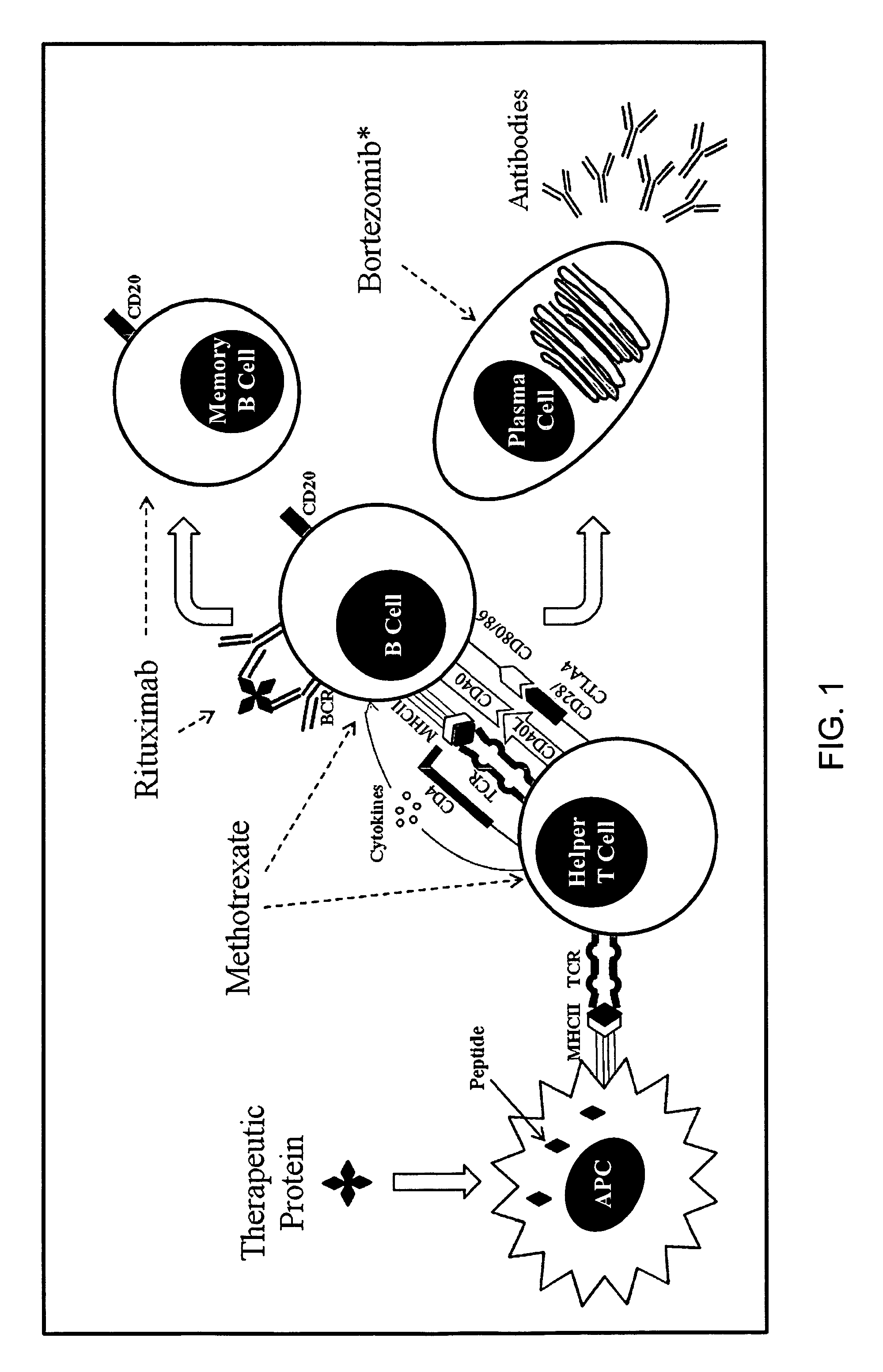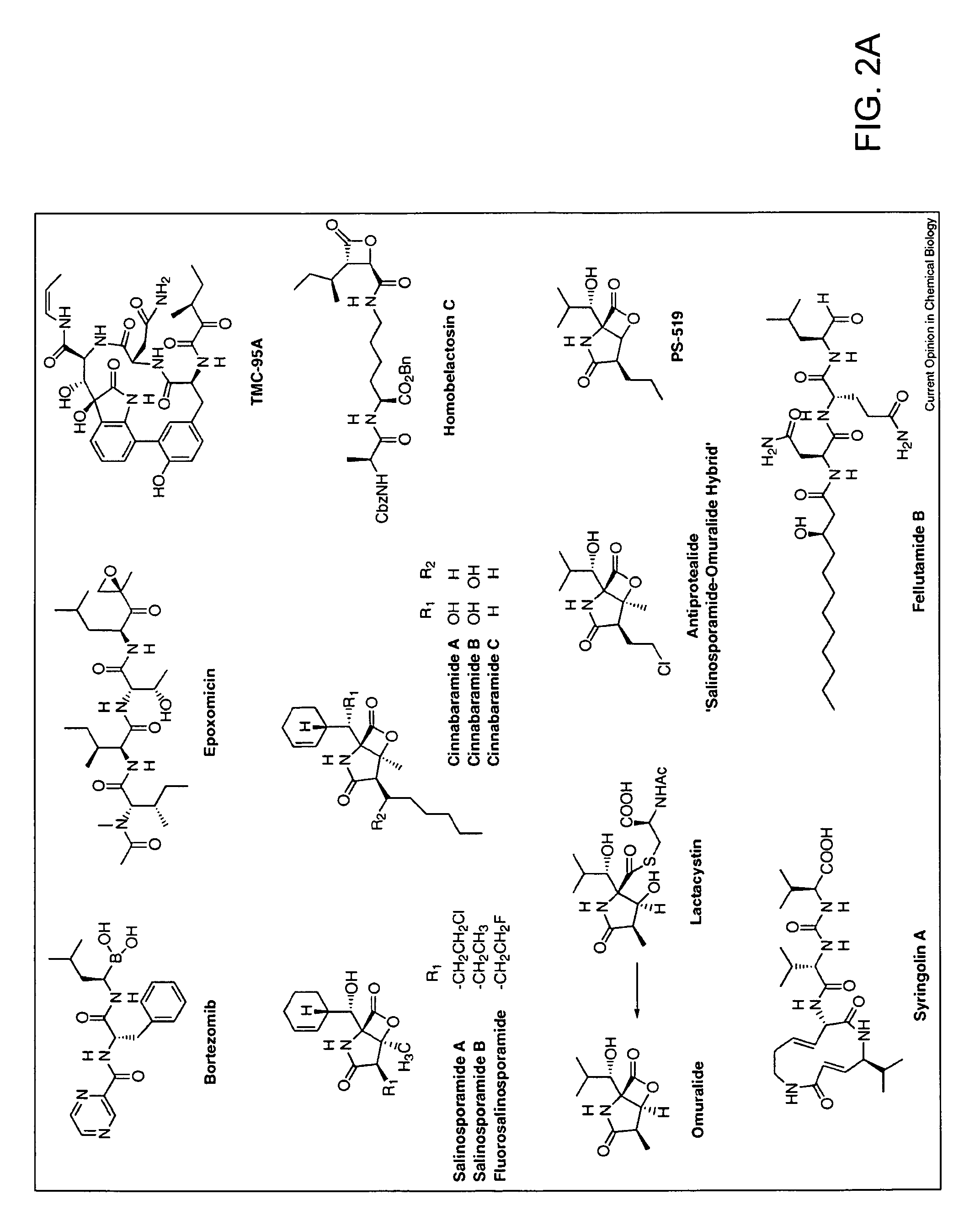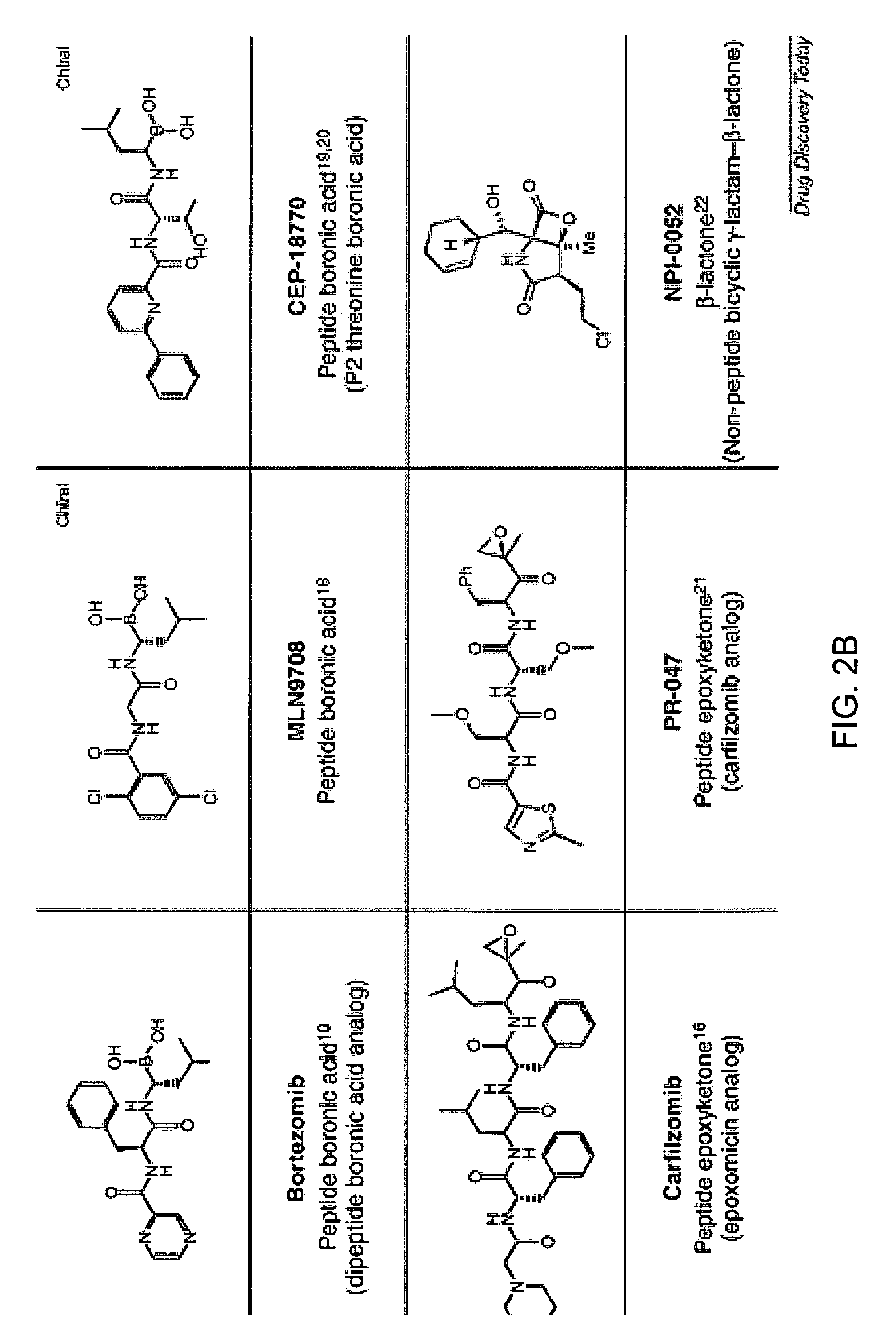Method of reducing titers of antibodies specific for a therapeutic agent
a technology of titers and antibodies, applied in the field of reducing titers of antibodies specific for a therapeutic agent, can solve the problems of no production of native enzymes, severe adverse outcomes, and poor response of crim-negative patients to ert, so as to prevent or reduce antibody titers
- Summary
- Abstract
- Description
- Claims
- Application Information
AI Technical Summary
Benefits of technology
Problems solved by technology
Method used
Image
Examples
example 1
Suppression of Antibodies against rhGAA by Bortezomib (Velcade®) in GAA-KO Pompe Disease Mouse Model
[0058]The study described below was undertaken to evaluate the effect of bortezomib (Velcade®)—a proteasome inhibitor on the suppression of antibodies against rhGAA in a GAA-KO mouse model treated with enzyme replacement therapy (ERT) using Myozyme (alglucosidase alfa, rhGAA).
Experimental Details
GAA Knockout mice (GAA-KO)
Six GAA-KO mice in each group (Raben, Nagaraju et al. 1998) who were all 6-8 months age.
rhGAA Administration:
[0059]ERT was modeled in GAA-KO mice by retro-orbital injection of rhGAA (5 mg / ml [supplied by Genzyme]) over ˜15 s at 20 mg / kg. When second-dose of rhGAA (20 mg / kg) was administered, pretreatment with diphenhydramine (15-25 mg / kg) by intraperitoneal injection preceded rhGAA administration by 15 min.
ELISA:
ELISA detection of plasma anti-hGAA. An ELISA was performed as described (Ding, Hu et al. 2002). Briefly, recombinant hGAA (5 μg) in carbonate buffer was coat...
example 2
[0061]Presented below is the case of an infantile Pompe disease (IPD) patient treated with ERT who, following initial clinical improvement, subsequently declined following the development of high sustained antibody titers (HSAT). An attempt at immunosuppression using non-plasma cell directed therapies (i.e., cyclophosphamide and rituximab) failed to abrogate HSAT, despite elimination of circulating mature B cells, resulting in continued clinical decline. Following failure to reduce HSAT, treatment with bortezomib alone produced a dramatic and rapid decrease in antibody titer and a concomitant improvement in clinical status. Bortezomib was then combined with rituximab (anti-CD20 monoclonal antibody; mAb), methotrexate and intravenous immunoglobulin (IVIG) to sustain reduction in titer and to attempt tolerance induction. This is the first reported use of bortezomib in the setting of HSAT to a therapeutic protein. The ability to reverse HSAT and potentially induce immune tolerance with...
example 3
[0074]Patient is 5.6 year old Caucasian male diagnosed with Pompe disease at the age of 3.5 years based on reduced GAA activity in muscle and confirmed by mutation analysis (homozygous for c.1655T>C). Cross reactive immunologic material (CRIM) testing through western blot on skin fibroblas revealed CRIM positive status. Patient initially presented with respiratory failure and required BiPAP. After a brief unsuccessful trial of BiPAP the decision was made to perform tracheostomy with ventilation support at 3.5 years. ERT with alglucosidase alfa was commenced at the age of 3.6 years. Anti rhGAA antibody titers continued to rise and following 90 weeks of ERT the titers were 1:204,800. Along with the rise in antibody titers this patient showed clinical deterioration. Given the rise in antibody titers and concurrent clinical decline, bortezomib based immunomodulating regimen (described above in Example 2) was initiated. Following three rounds of bortezomib in combination with monthlyritu...
PUM
| Property | Measurement | Unit |
|---|---|---|
| concentration | aaaaa | aaaaa |
| peak velocity | aaaaa | aaaaa |
| antibody titers | aaaaa | aaaaa |
Abstract
Description
Claims
Application Information
 Login to View More
Login to View More - R&D
- Intellectual Property
- Life Sciences
- Materials
- Tech Scout
- Unparalleled Data Quality
- Higher Quality Content
- 60% Fewer Hallucinations
Browse by: Latest US Patents, China's latest patents, Technical Efficacy Thesaurus, Application Domain, Technology Topic, Popular Technical Reports.
© 2025 PatSnap. All rights reserved.Legal|Privacy policy|Modern Slavery Act Transparency Statement|Sitemap|About US| Contact US: help@patsnap.com



